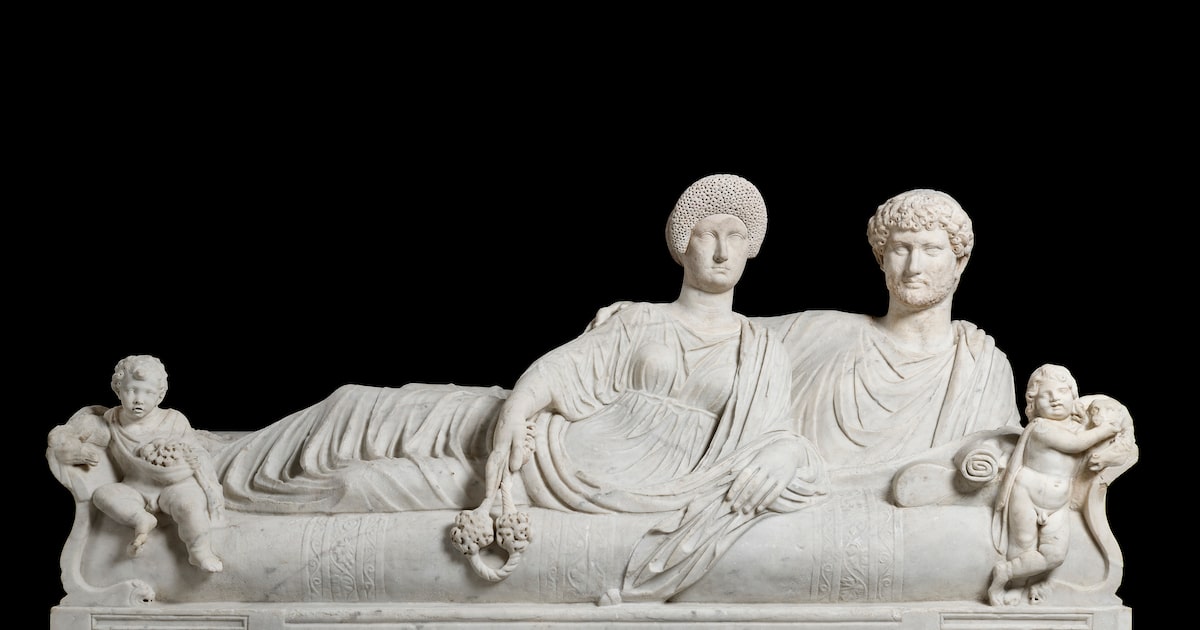FORT WORTH — The Torlonia Collection of ancient sculpture, a portion of which has just arrived at the Kimbell Art Museum in Fort Worth, offers a dazzling glimpse of the Roman world and a compelling history of collecting itself.
By the time of the Renaissance, the sculptures in marble and bronze that had once populated the public and private spaces of ancient Rome were now buried, broken or dispersed, sometimes incorporated into new works and sometimes forgotten. In the 15th century, scholars and artists began to scour ruins and the countryside up and down the Italian peninsula in search of fragments of the lost past.
Through assemblages of ancient art in studios, palaces and villas, artists and writers studied sculptures and inscriptions to remake the culture of their own time, and enterprising patrons displayed the materials of the past to shape their image in the present.
In the 18th century, ancient sculpture along with antiquarian scholarship and archeological excavations informed a reimagination of Greek and Roman culture in neoclassical art and architecture. It was from these practices of engaging with ancient art that the Torlonia Collection emerged and became the premier private collection of Roman sculpture in the world.
News Roundups
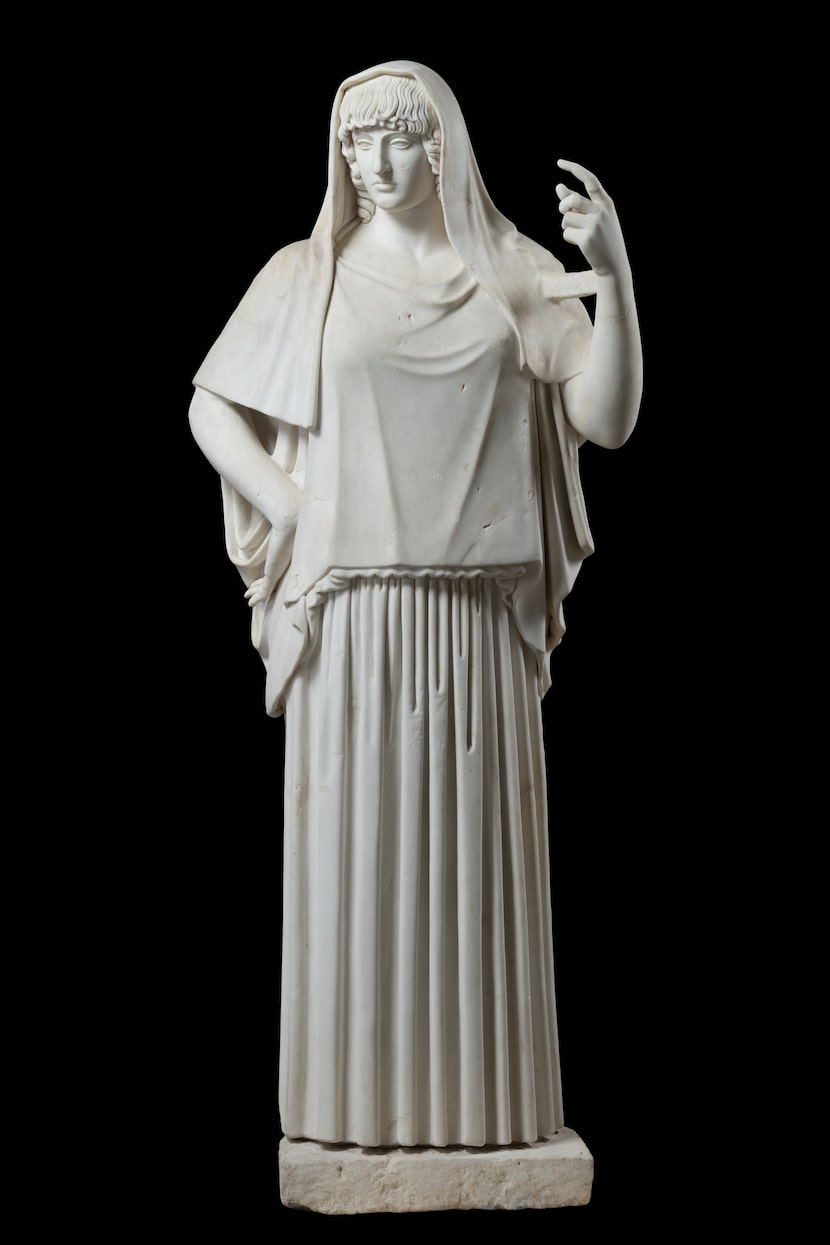
Among the exhibition’s sculptures of gods and goddesses is a monumental marble statue of Hestia made in Imperial Rome and modeled on a Greek bronze from seven centuries earlier.
Lorenzo De Masi / Torlonia Collection
Over the course of the 19th century, as their fortunes rose through banking and real estate, the Torlonia family acquired entire collections formed in earlier centuries, purchased estates that came with their own antiquities and made new discoveries in excavations at their properties in and around Rome. As newcomers to Italy’s elite, the Torlonia family collected ancient sculptures to root their family history in Rome’s deep past and to project cultural prestige in the present. In the later 19th century, when the Torlonia family opened a museum in Rome to display its cache of more than 600 marbles (and one bronze), the collection helped shape the collective memory of the newly unified Italy.
For decades following the closure of the museum during World War II, the collection was stashed in storerooms and became the focus of public controversy and long-running disputes with the Italian state. Generations of art historians came to know its treasures only through word-of-mouth and a 19th-century catalog.
But after the Torlonia Foundation was formed to preserve and promote the collection, it was reintroduced to the public for the first time in 80 years in a 2020 exhibition in Rome. Now, in “Myth and Marble: Ancient Roman Sculpture from the Torlonia Collection,” almost 60 sculptures have traveled to North America, touring Chicago, Montreal and Fort Worth.
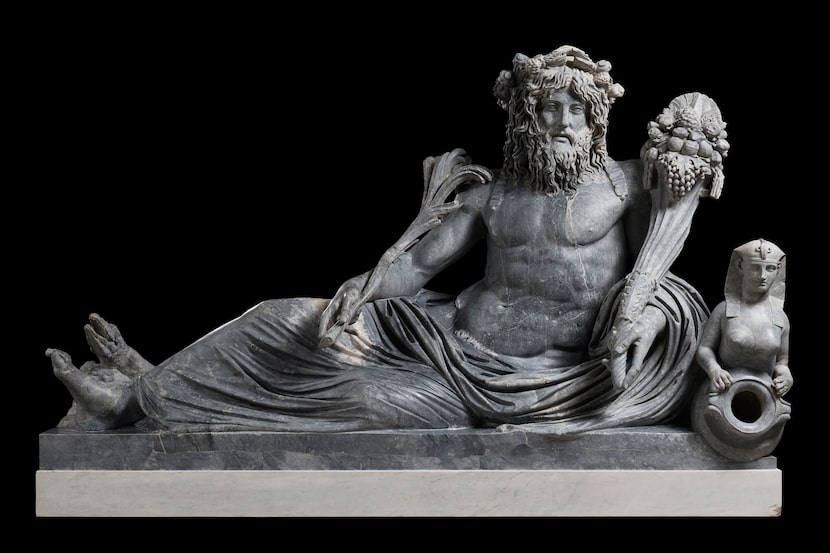
“The Torlonia Nile, Formerly the Barberini-Albani Nile,” dating to the late first century, was sculpted in gray marble.
Lorenzo De Masi / Torlonia Collection
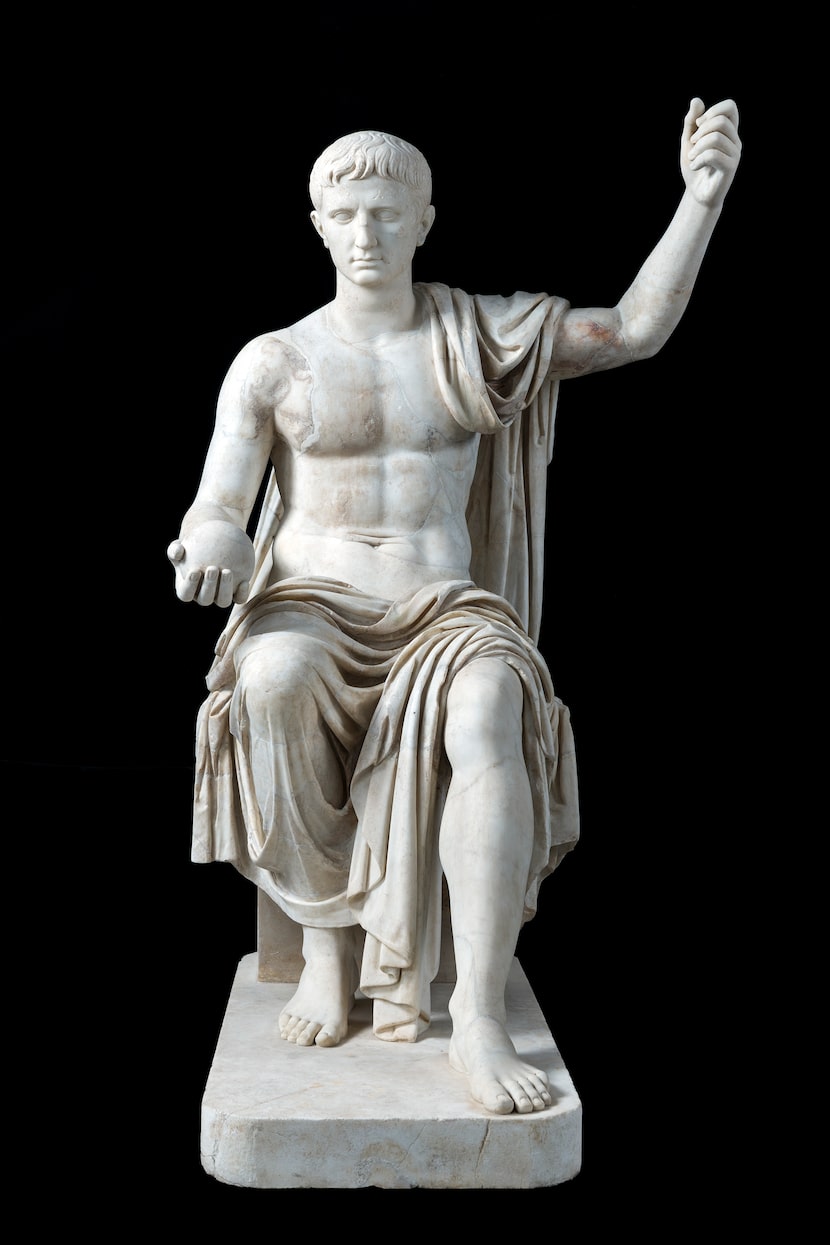
“Statue of an Emperor on a Throne with Portrait of Augustus,” which dates to the first century, is among the works from the Torlonia Collection on display in Fort Worth.
Lorenzo De Masi / Torlonia Collection
Visiting the Torlonia Collection at the Kimbell, I had an uncanny feeling of meeting old friends for the first time. The exhibition opens with one of the finest marble sculptures to survive from the Roman Republic: the head of a young woman, carved in a play between naturalism and abstraction, with traces suggesting it was once ornamented with jewelry. I had met the woman long ago in black-and-white slides projected on the wall of a darkened lecture hall. Encountering her face to face, and moving around the vitrine to examine the sculptor’s assured carving from the arch of the brow to the nape of the neck, I shared a bit of the wonder that Torlonia excavators must have felt when they unearthed the sculpture at Vulci.
From here, the exhibition unfolds in a series of themes that explore the roles that sculpture played in the Roman world, and trace the formation and conservation of the Torlonia Collection itself.
Among the assembled sculptures of gods and goddesses, we find a monumental marble statue of Hestia made in Imperial Rome and modeled on a Greek bronze from seven centuries earlier. The work joined the Torlonia marbles by way of the great 17th-century collection of Italian banker Vincenzo Giustiniani.
A gathering of Imperial portraits, deftly arranged to trace intertwining family trees, features an arresting portrait of Hadrian that the Torlonia family acquired along with the 18th-century Villa Albani. Another portrait, this one of Faustina the Younger (daughter, wife, mother and mother-in-law to four Roman emperors), was dug up in the Acquatraversa area of Rome.
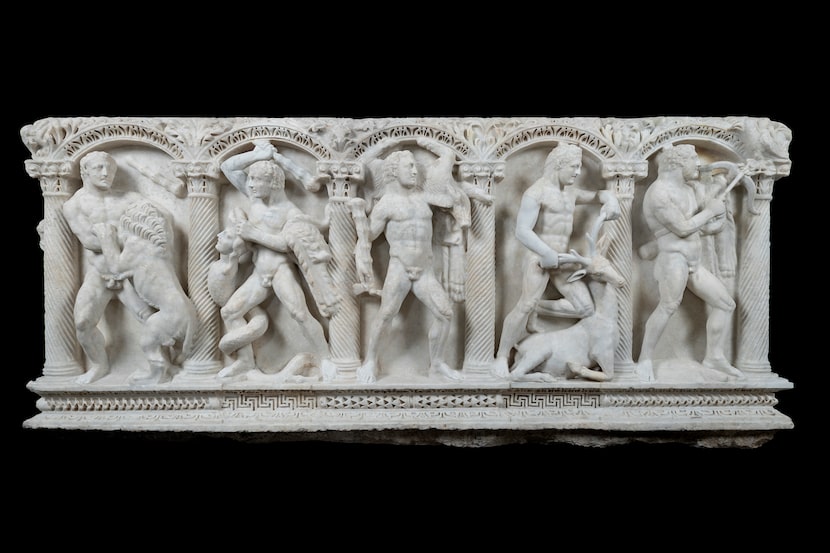
This sarcophagus depicting the Labors of Hercules was studied and sketched by scores of Renaissance artists to capture the musculature and dynamism of the male body.
Lorenzo De Masi / Torlonia Collection
Selections from Torlonia holdings of memorial sculpture include a sarcophagus with the Labors of Hercules that scores of Renaissance artists studied and sketched to capture the musculature and dynamism of the male body, and a moving funerary portrait that a Roman couple commissioned for their son, who, according to a careful inscription, lived for 14 years and nine days. A votive relief recovered from Portus depicts the Imperial harbor, with its lighthouse and triumphal arch and monumental public sculpture, and in the foreground a merchant ship arriving home after a voyage.
The exhibition pays welcome attention to histories of conservation. Over the centuries, with the natural forces of time as well as changes in taste and artistic practice, the Torlonia Collection’s marble sculptures have been stripped of their original polychromy, missing pieces have been replaced and fragments old and new have been assembled to create new works. One instance of creative reconstruction is a statue of a resting goat, which the teenage sculptor Gian Lorenzo Bernini restored with youthful virtuosity — and a touch of mischief.
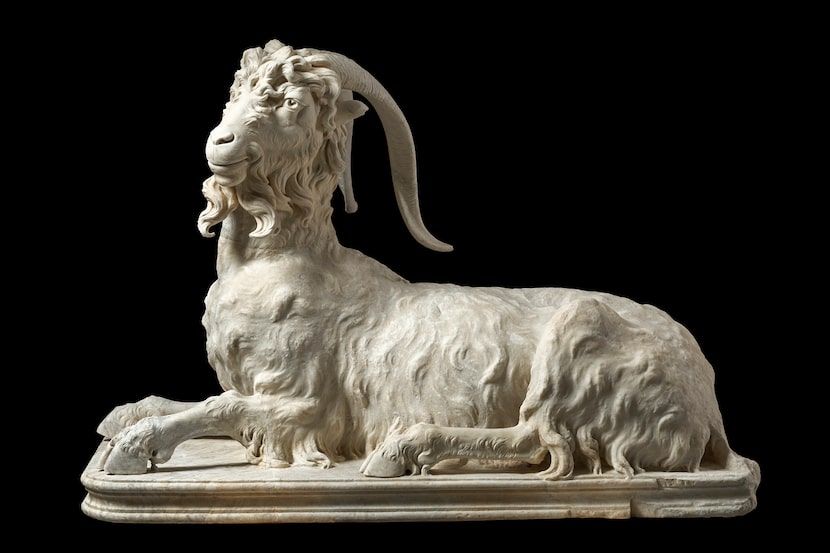
“Statue of a Resting Goat” dates to the late first century, though the head was restored by Renaissance master sculptor Gian Lorenzo Bernini in the 1600s, when he was just a teen.
Lorenzo De Masi / Torlonia Collection
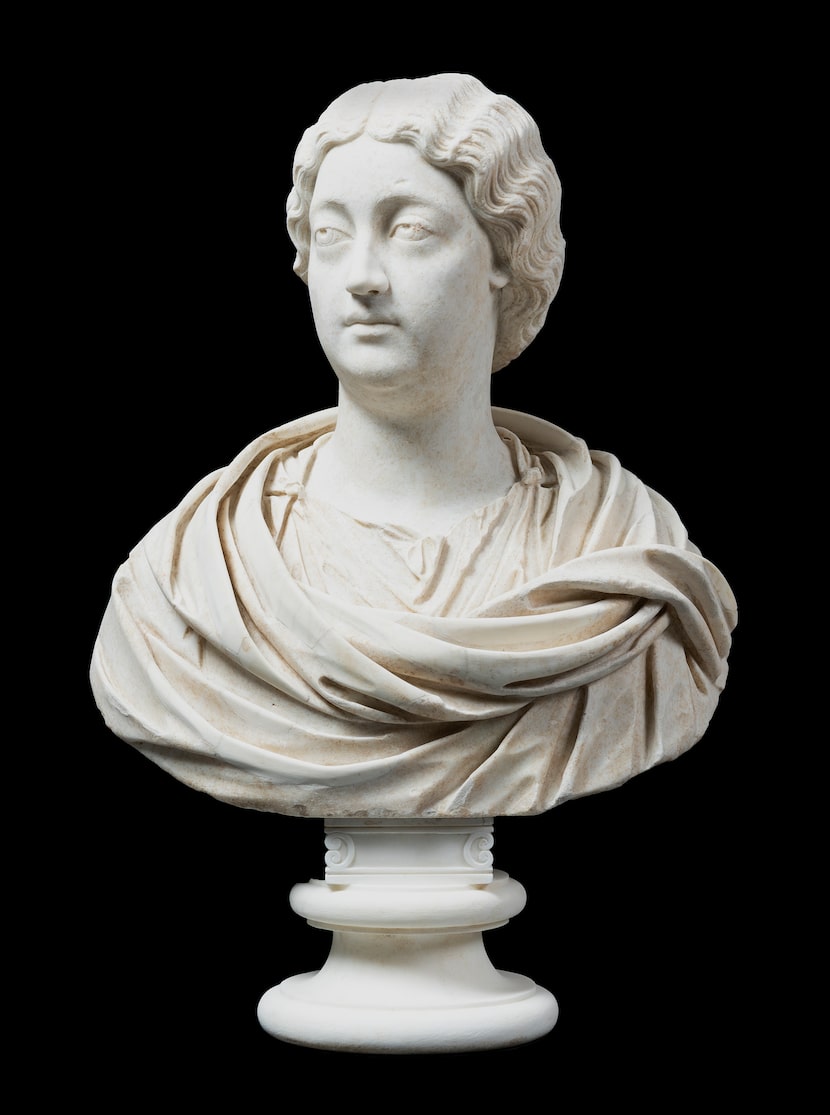
“Portrait of Faustina the Younger,” a marble sculpture dating to around 160 AD, was excavated from the Acquatraversa area of Rome. Faustina was the daughter, wife, mother and mother-in-law to four Roman emperors.
Lorenzo De Masi / Torlonia Collection
The presence of the Torlonia marbles in a museum built by Louis Kahn and later Renzo Piano seems apt, given the architectural elements like barrel vaults that Kahn drew from Roman architecture. The airy light of the Piano pavilion softens and animates the works on view, even if the display of most of the sculptures in one open gallery sometimes compromises spatial and narrative cohesion. Nevertheless, the sheer abundance of the installation and the sweep of the space create the sense of an unexpected immersion in a rediscovered treasure trove.
For audiences in North America, “Myth and Marble” is a long-awaited revelation. Even as the Torlonia Collection offers a close encounter with a distant place and time, it invites us to consider how we collect, remake and find meaning in the past.
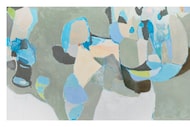 At Barry Whistler Gallery, Terrell James conjures land and sea in luminous abstractions
At Barry Whistler Gallery, Terrell James conjures land and sea in luminous abstractions
The Texas painter’s “Catalyst” show blends atmospheric color with organic suggestion.
 Go ‘touch grass’ at this downtown Dallas immersive art show
Go ‘touch grass’ at this downtown Dallas immersive art show
The experience at the Joule Hotel is a welcome respite from everyday stressors.
Details
“Myth and Marble: Ancient Roman Sculpture from the Torlonia Collection” is on view through Jan. 25 at the Kimbell Art Museum, 3333 Camp Bowie Blvd., Fort Worth. Open Tuesdays through Thursdays and Saturdays from 10 a.m. to 5 p.m., Fridays from noon to 8 p.m., and Sundays from noon to 5 p.m. $18 for adults, $16 for seniors 60 and older and students with ID, $14 for children ages 6-11, and free for Kimbell members and children under 6. Half-price all day on Tuesdays and on Fridays from 5 to 8 p.m. Additional discounts are available on-site for K–12 teachers, active-duty military and SNAP program recipients. For more information, call 818-332-8451 or visit kimbellart.org.
